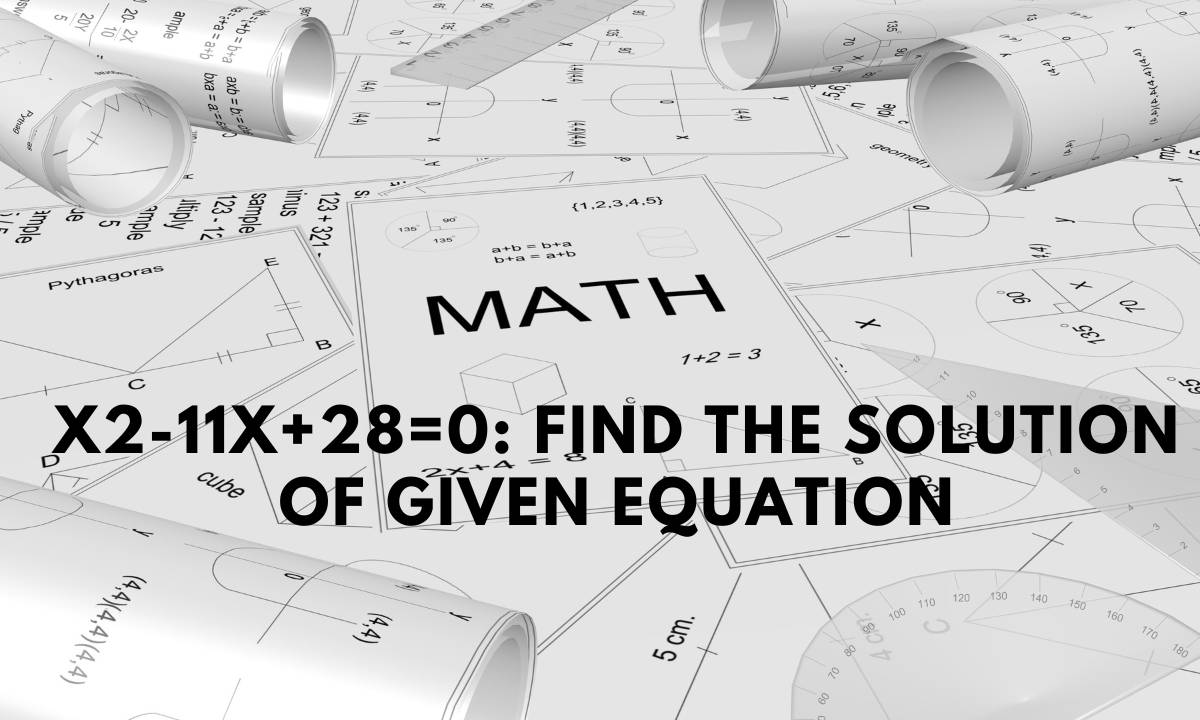A fundamental idea in algebra, quadratic equations are used to solve a variety of mathematical and practical problems. We shall go into the properties, solutions, and applications of the quadratic equation x2-11x+28=0 in this post.
Let’s first lay the groundwork for our discussion of the quadratic equation x2-11x+28=0 by gaining a basic understanding of quadratic equations.
What is a Quadratic equation?
A quadratic equation is a second-degree polynomial equating, commonly termed as ax2 + bx + c = 0, where a, b, and c are coefficients and x is the variation one want to solve for. The two roots of a quadratic equation might be either real or complex integers.
An algebra equation of the second degree in x is a quad equation. The equation can be written as ax2 + bx + c = 0, there x may be a variation, a and b are the constant coefficients, and c is the constant terms. The thing that the coefficient of x2 be a non-zero term (a 0) is significant for an equation to be termed as a quadratic equation. The x2 term is noted first when constructing a quadratic equation in standard formation, then the x term, and finally the constant term.
Q. Equation:- x2-11x+28=0
Solution of x2-11x+28=0:-
Let’s now concentrate on the given equation: x2-11x+28=0.
The Quadratic Equation Factored
Factoring is one method for resolving quadratic problems. In particular situation, the equation can be factorized as follows:
- x2 – 11x + 28 = 0 (x – 4)(x – 7) = 0
Locating the Sources
Each of the factors is set to zero in order to determine the equation’s solutions (roots):
- x – 4 = 0 => x = 4 x – 7 = 0 => x = 7
Hence, x = 4 and x = 7 are the roots of this theorem x2 – 11x + 28 = 0.
Presentation in Graph of equation x2-11x+28=0
Let’s graph the equation to represent the solutions.

Practical Applications
Quadratic equations are not merely abstract ideas; they have real-world uses in many different industries.
Physics In physics, quad equations are needed to explain how objects move while gravity is at the work. When an object is put upwards, the time it takes for it to reach a normal height can be calculated using the equation x2-11x+28=0.
Quadratic Equation’s Roots
The two things of x that are determined after a quadratic equation is solved are told to as the problem’s roots. These quad equation roots are also came to be known as the zeros in the equating. For example, the square roots of this equation x2 – 3x – 4 = 0 are x = -1 and x = 4, simultaneously, due to each of these values satisfying the equating. i.e.,
- If x = -1 (-1)2 – 3(-1) – 4 = 1 + 3 – 4 = 0
- If x = 4, (4)2 – 3(4) – 4 = 16 – 12 – 4 = 0
The roots of a quad equation could be found in a variation of ways. The use of the quadratic formula is some of them.
Quadratic Equation
The simplest method for knowing a quadratic equation’s roots is the quadratic formula. However there are some quadratic equations that are not easy to factorize, and in these cases, one can quickly discover the rootings by using the quad formula. The quadratic formula’s two roots can be shown as a single statement. The equating of two different roots can be signified using either the positive sign or the negative sign.
Conclusion
Finally, it may be said that the quadratic equation x2-11x+28=0 is a fundamental idea in mathematics that has practical applications. It has two roots: x = 4 and x = 7, which were discovered through factoring and solving it. Understanding quadratic equations is an important ability for problem-solving because it is important in mathematics and many other disciplines.
Also, Read About:
sxx sxy syy equations: Solution of Linear Regression In Statistics
x+x+x+x is equal to 4x: Find The Solution Here
